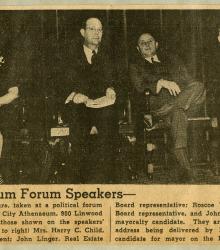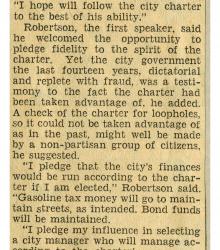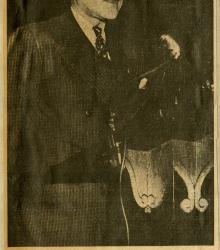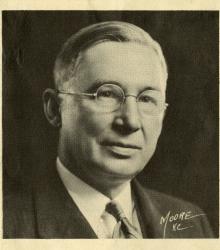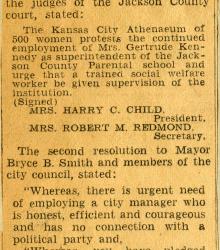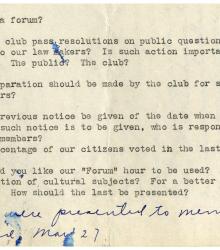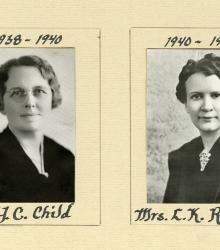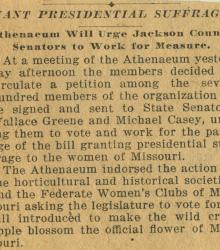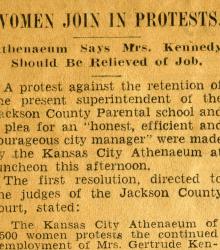News clipping detailing 1940 mayoral candidates present at Athenaeum forum. Candidates addressed club members at the Athenaeum club house at 900 Linwood Boulevard.
The Athenaeum
News clipping summarizing pledges made by mayoral candidates John B. Gage and Flavel Robertson at Athenaeum forum in 1940.
News clipping of Flavel Robertson, Democratic mayoral candidate in 1940 reform election, at Athenaeum Forum.
Athenaeum meeting notes documenting internal discussion about direct political involvement. A list of questions about how club forum time should be used. Forums were club wide events addressing issues of the day.
Portrait of Elsie Child (Mrs. H. C. Child), president of the Kansas City Athenaeum 1938-1940. Portrait of Leona Koehler Ryan (Mrs. L. K. Ryan), president of the Kansas City Athenaeum 1940-1942.
American women’s growing participation in public and political life during the 1920s was the cause of much national tension and debate. While many Americans felt that a woman’s proper place ought to be confined to the home, increasing numbers of women demanded influence outside that narrow sphere. After gaining the right to vote in 1920, women in Kansas City made their influence felt through their work in women’s clubs like the Athenaeum. This early training in civic reform efforts would ultimately position Kansas City women as one of the more powerful forces for change during the reform elections of 1940.
Through the Woman’s City Club, Women’s Forward Kansas City Committee, and other civic organizations, women in Kansas City exemplified the principles of benevolence, reform, and equality in their campaign to oppose the Pendergast machine and eventually replace it in a “clean sweep.” Wielding brooms as potent props symbolizing the clean-up of corruption, and with the campaign slogan, "Ballots and Brooms vs. Bosses and Bullets," the women reformers joined the United Campaign Committee in 1939-1940 to champion an amended city charter and a slate of reform-minded candidates for public office.
Kansas City women–members of the Athenaeum, the Woman’s City Club, and other organizations–sought to assert power in their community and beyond. Coming from Republican and independent Democratic backgrounds, and abhorring the influence of the Democratic machine, they embraced a progressive spirit that revered what they envisioned as good government.
